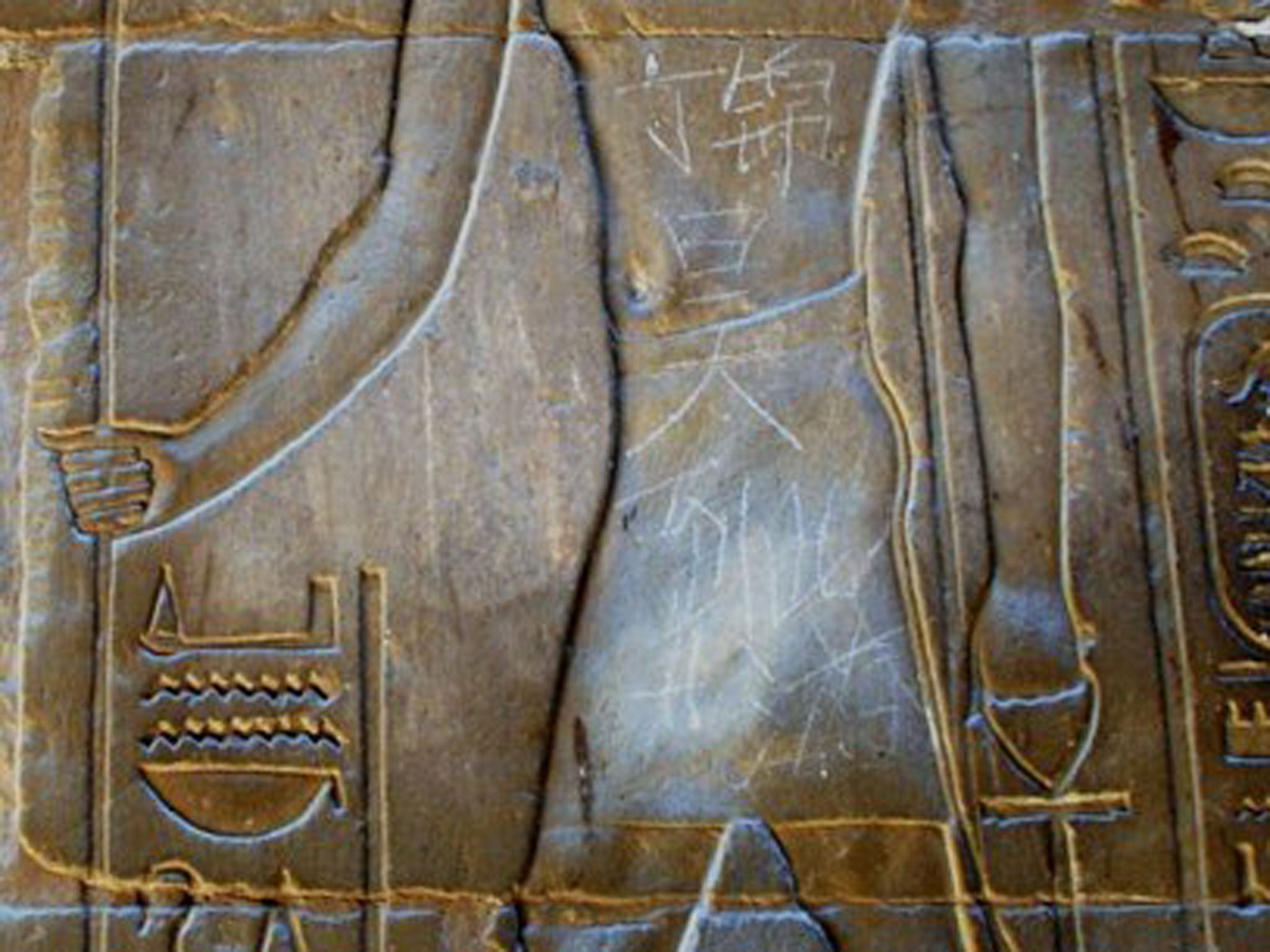Chinese schoolboy, 15, exposed as Egypt’s ancient temple graffiti vandal
Internet users name and shame teenager who scratched 3,500-year-old artwork

The parents of a Chinese teenager who scratched his name into a 3,500-year-old Egyptian artwork have apologised for his actions after internet users tracked down the boy to name and shame him.
The 15-year-old, from Nanjing, was identified after a photo of his graffiti – which said “Ding Jinhao was here” in Mandarin – at the Temple of Luxor was posted online on Friday.
A microblogger named Shen, who visited the temple on the banks of the River Nile three weeks ago, cited the graffiti as an example of shameful behaviour by Chinese tourists abroad. The posting attracted a torrent of replies, including suggestions that the perpetrator be tracked down.
Investigators used the internet (known in China as “the human flesh search engine”) to trace Ding Jinhao and released his age, his school and other personal details. Hackers even compromised his former primary school’s website, forcing visitors to click on a sign parodying Ding’s graffiti before they could enter the site, the Global Times newspaper reported.
Ding’s parents admitted their son had defaced the artwork a few years ago but said he was sorry for his actions. “We want to apologise to the Egyptian people and to people who have paid attention to this case across China,” the boy’s mother told Nanjing’s Modern Express newspaper at the weekend.
Ding’s parents said it was their lack of education and supervision that led to his mischief. They said the attack happened when their son, now in middle school, was little. They were with a tourist group and did not notice when he scrawled on the sculpture, the mother said. “We have taken him sightseeing since he was little and we often saw such graffiti. But we didn’t realise we should have told him that this is wrong,” she added. She also implored internet users not to hound her son.
The boy’s father asked for his son to be left alone, saying: “This is too much pressure for him to take.” However, the Egyptian ministry of antiquities said the damage to the temple was superficial and it was being repaired.
The number of Chinese who can afford foreign holidays is soaring, and they spent £67bn overseas last year. Earlier this month, Wang Yang, one of China’s four vice-premiers, said the “uncivilised behaviour” of some Chinese tourists was harming the country’s image. Graffiti is relatively rare in China and there are laws to protect cultural sites. Punishments for intentionally defacing relics can involve a short stint in jail and a fine of up to 500 yuan (£54).
Anger over Ding Jinhao’s graffiti was also directed at Chinese authorities, who were accused of failing to protect ancient sites such as the Great Wall of China from polution and structural decay.
“We don’t apologise if we tear down the walls of an ancient city,” wrote one microblogger, Ding Laifeng. “We don’t apologise if we bury an ancient burial site. We don’t apologise if we destroy ancient buildings with pollution? So where do we get the face to ask a graffiti child to say sorry?”
Another commentator, Yu Minhong, blamed the boy’s parents and said China was right to be ashamed by Ding’s actions. “When you go to every tourist site, you can see something like: “X has been here”. We feel ashamed if we do it abroad, why not in China? We should learn to protect our cultural relics and understand it is also a shame to write on our own faces.”
Join our commenting forum
Join thought-provoking conversations, follow other Independent readers and see their replies
Comments